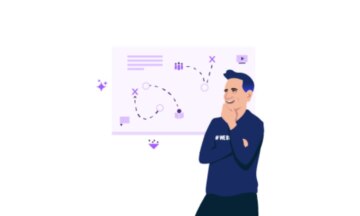Webinar Best Practices Basics: Planning and Strategy

From lead generation to product demos, webinars serve a lot of functions. But before you get started, you gotta learn the fundamentals. In this blog post, we’re going to cover the webinar best practices basics for planning and strategy. Let’s get started.
Before you start creating, decide what you want your webinar to be. Ask yourself where your audience is in the buying cycle. If they’re top of funnel, your webinar should focus on thought leadership and lead generation. For a mid-funnel audience, think positioning and influencing. The bottom of the funnel is all about demonstrating and closing. Just know what you want your webinar to achieve before you hit the broadcast button.
Know Your Audience
Now that you’ve set your goals, it’s time to move onto the next webinar basics stage for planning and strategy. Here, you need to focus your efforts on audience personas, so you can really tailor your content to resonate with the right people. Think about who you’re trying to reach with your webinar. Is your target audience a prospect, a customer or a partner? Are they executives or practitioners? Do you want to target specific industries? Write it all down, along with any other key demographics. Once you know who you’re creating your webinar for, you’ll have a better picture of what your content should be.
Create Killer Content
Now the fun part begins because it’s time to brainstorm webinar topics and content ideas. Start by focusing on your audience’s pain points and business challenges. Then, review the performance of your existing content to see what’s already performing well. Look at industry trends, hot topics, the latest innovations and new regulations. Get insights directly from your audience’s by conducting pre-and post-webinar surveys, live chats, webinar Q&A and social listening.
Build a Dream Team
Brainstorming works better with multiple brains. The size of your team will vary depending on the scale of your webinar, but at the very least, you’ll want to assign three key roles: a producer to make sure the technical components run smoothly, a promoter to spread the word through all relevant channels and a presenter to build the presentation deck and deliver the webinar.
Run Your Webinar
Alright, it’s time to run your webinar! Gather your content and your team and craft a few slides to speak to. Be sure to run through your presentation once or twice to familiarize yourself with the flow of the webinar and make any necessary adjustments. Relax and remember to have fun.
Not sure if you can memorize this short guide? No worries. Download our 5-step Checklist for Webinar Planning infographic and print off a copy to reference.

